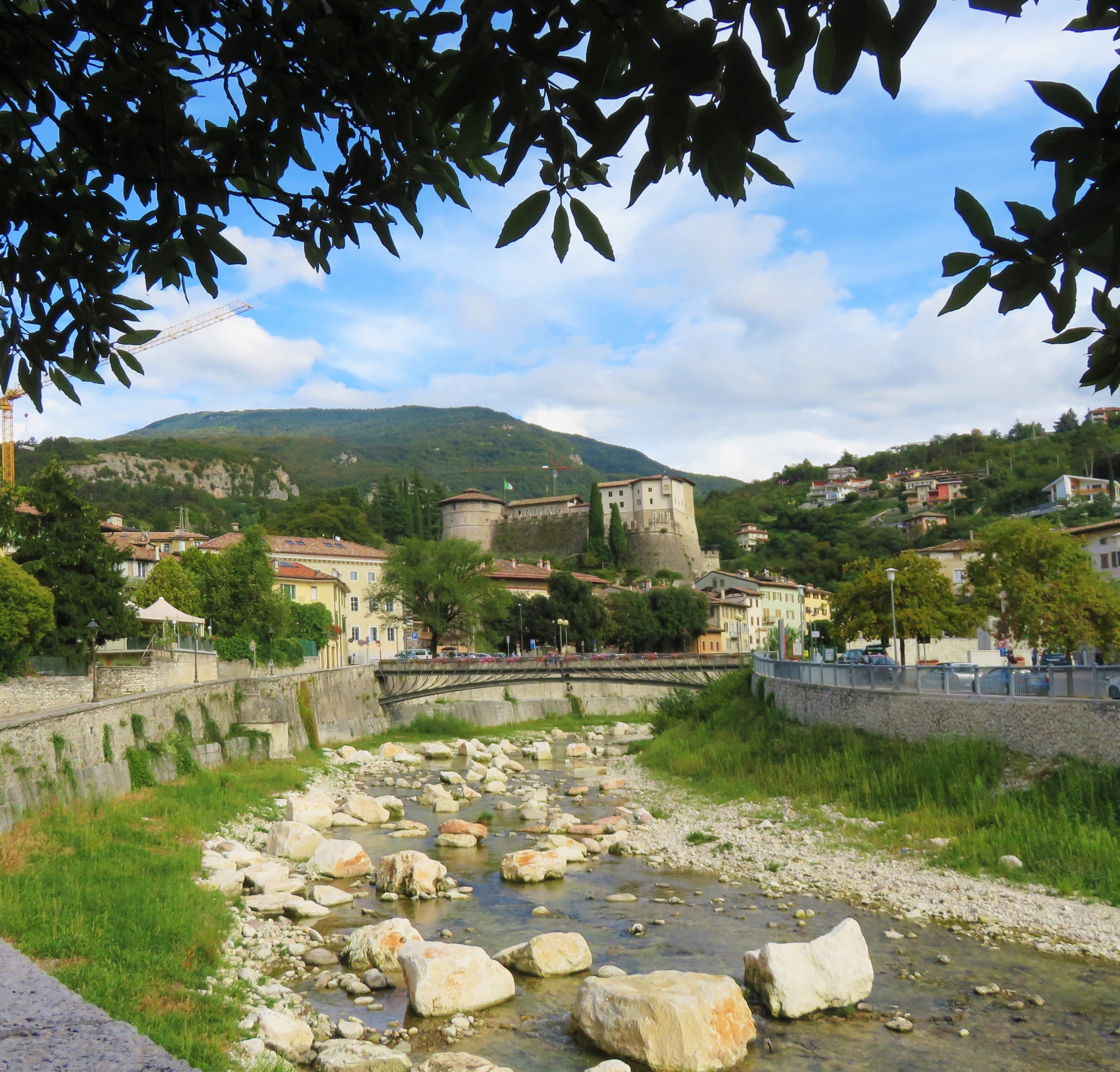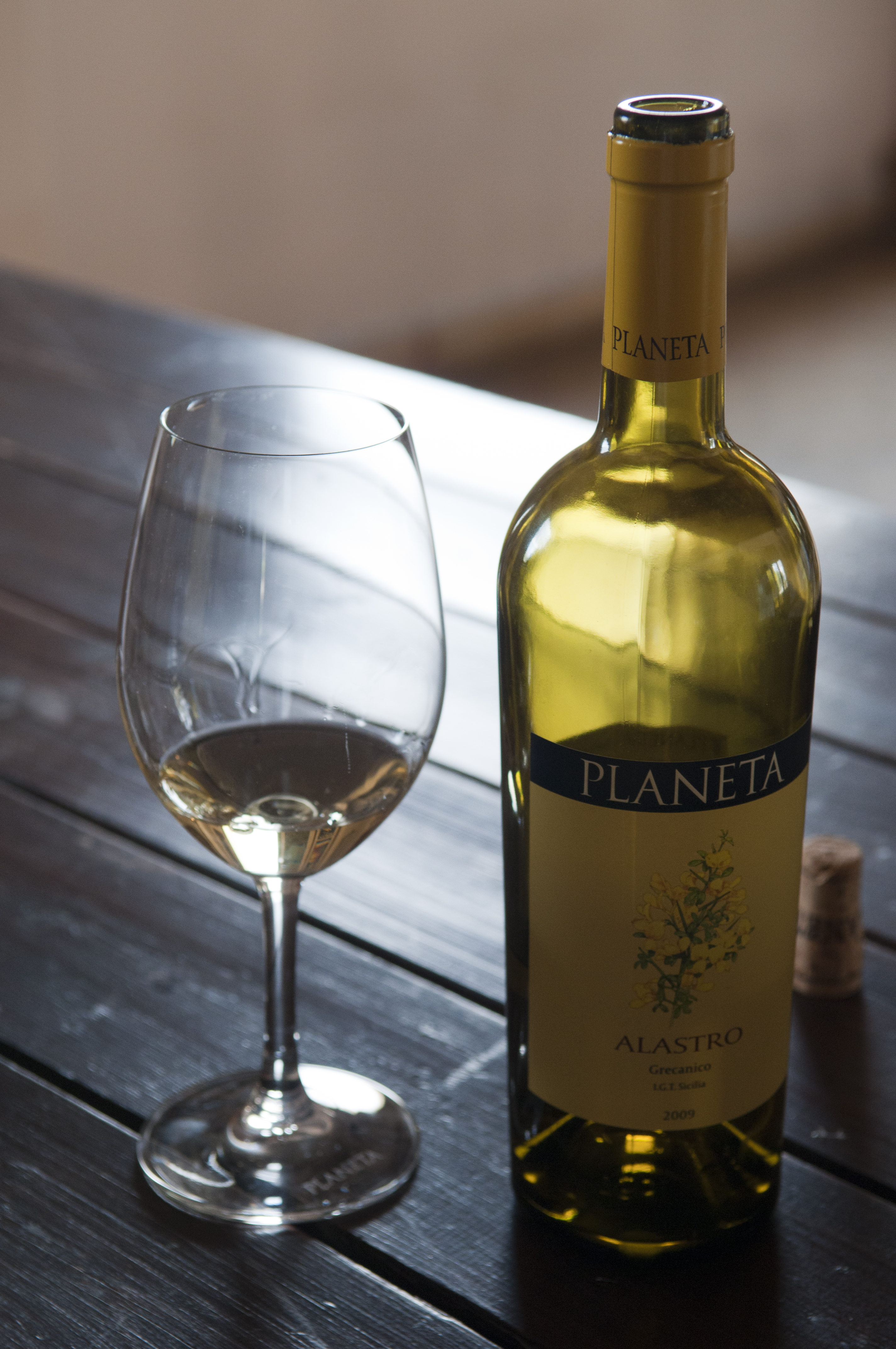|
Eremo Di San Colombano
Eremo di San Colombano is a hermitage in Trambileno, Italy, notable for its location in the side of a mountain. Some natural caves, halfway up the rock wall of the gorge formed by the stream of Leno Vallarsa were certainly used from 753 (the date inscribed on the rock) from a Monaco hermit. History According to legend, the hermit San Colombano first arrived there and killed the dragon that caused the death of children baptised in the waters of the river below Leno. More likely, the legend was born as a place from the first hermit monks from the nearby monastery of Bobbio, or the Priory of St. Columban Bardolino. Visitation to the site was prescribed during Lent. The first settlement was the "Grotta degli Eremiti," or "Cave of the Hermits," in an undefined time. The inscription dated 753, engraved on the rock next to the current tower, dates back, however, the continued practice of the monastic hermitage. Between the late tenth and early eleventh century, records indicate t ... [...More Info...] [...Related Items...] OR: [Wikipedia] [Google] [Baidu] |
Trambileno
Trambileno (german: Trumbeleis) is a ''comune'' (municipality) in Trentino in the northern Italian region Trentino-Alto Adige/Südtirol, located about south of Trento. Trambileno borders the following municipalities: Rovereto, Terragnolo, Vallarsa, Posina and Valli del Pasubio. It is known as the location of the Eremo di San Colombano monastery, a church set on a rock ledge. Twin towns * Bento Gonçalves, Brazil Brazil ( pt, Brasil; ), officially the Federative Republic of Brazil (Portuguese: ), is the largest country in both South America and Latin America. At and with over 217 million people, Brazil is the world's fifth-largest country by area ..., since 2007 References Cities and towns in Trentino-Alto Adige/Südtirol {{TrentinoAltoAdige-geo-stub ... [...More Info...] [...Related Items...] OR: [Wikipedia] [Google] [Baidu] |
Rovereto
Rovereto (; "wood of sessile oaks"; locally: ''Roveredo'') is a city and ''comune'' in Trentino in northern Italy, located in the Vallagarina valley of the Adige River. History Rovereto was an ancient fortress town standing at the frontier between the bishopric of Trento – an independent state until 1797 – and the republic of Venice, and later between Austrian Tyrol and Italy. In the Middle Ages it was known by its German toponyms ''Rofreit'' and ''Rovereith''. This town started to be populated with inhabitants of the prehistory with traces that were found where today are the oldest ways which belong to the actual main historical centre, around via della Terra. The town has a complexity of plans which are printed in various developments, as if it could have different directions to evolve an ideal, brought towards its completeness in the 15th century, from the model of Siena – the leaf of the crown and the classic Athens reference of the foxil Nautilus. Some of the trace ... [...More Info...] [...Related Items...] OR: [Wikipedia] [Google] [Baidu] |
Roman Catholic
Roman or Romans most often refers to: *Rome, the capital city of Italy *Ancient Rome, Roman civilization from 8th century BC to 5th century AD *Roman people, the people of ancient Rome *'' Epistle to the Romans'', shortened to ''Romans'', a letter in the New Testament of the Christian Bible Roman or Romans may also refer to: Arts and entertainment Music * Romans (band), a Japanese pop group * ''Roman'' (album), by Sound Horizon, 2006 * ''Roman'' (EP), by Teen Top, 2011 *" Roman (My Dear Boy)", a 2004 single by Morning Musume Film and television * Film Roman, an American animation studio * ''Roman'' (film), a 2006 American suspense-horror film * ''Romans'' (2013 film), an Indian Malayalam comedy film * ''Romans'' (2017 film), a British drama film * ''The Romans'' (''Doctor Who''), a serial in British TV series People *Roman (given name), a given name, including a list of people and fictional characters *Roman (surname), including a list of people named Roman or Romans *Ῥωμ� ... [...More Info...] [...Related Items...] OR: [Wikipedia] [Google] [Baidu] |
Hermitage (religious Retreat)
A hermitage most authentically refers to a place where a hermit lives in seclusion from the world, or a building or settlement where a person or a group of people lived religiously, in seclusion. Particularly as a name or part of the name of properties its meaning is often imprecise, harking to a distant period of local history, components of the building material, or recalling any former sanctuary or holy place. Secondary churches or establishments run from a monastery were often called "hermitages". In the 18th century, some owners of English country houses adorned their gardens with a "hermitage", sometimes a Gothic ruin, but sometimes, as at Painshill Park, a romantic hut which a "hermit" was recruited to occupy. The so-called Ermita de San Pelayo y San Isidoro is the ruins of a Romanesque church of Ávila, Spain that ended up several hundred miles away, to feature in the Buen Retiro Park in Madrid. Western Christian tradition A hermitage is any type of domestic dwelli ... [...More Info...] [...Related Items...] OR: [Wikipedia] [Google] [Baidu] |
Saint Columbanus
Columbanus ( ga, Columbán; 543 – 21 November 615) was an Hiberno-Scottish mission, Irish missionary notable for founding a number of monastery, monasteries after 590 in the Franks, Frankish and Lombards, Lombard kingdoms, most notably Luxeuil Abbey in present-day France and Bobbio Abbey in present-day Italy. Columbanus taught an Irish monastic rule and penitential practices for those repenting of sins, which emphasised private confession to a priest, followed by penances levied by the priest in reparation for the sins. Columbanus is one of the earliest identifiable Hiberno-Latin writers. Sources Most of what we know about Columbanus is based on Columbanus' own works (as far as they have been preserved) and Jonas of Bobbio, Jonas of Susa's ''Vita Columbani'' (''Life of Columbanus''), which was written between 639 and 641. Jonas entered Bobbio after Columbanus' death but relied on reports of monks who still knew Columbanus. A description of miracles of Columbanus written by ... [...More Info...] [...Related Items...] OR: [Wikipedia] [Google] [Baidu] |
Bobbio
Bobbio ( Bobbiese: ; lij, Bêubbi; la, Bobium) is a small town and commune in the province of Piacenza in Emilia-Romagna, northern Italy. It is located in the Trebbia River valley southwest of the town Piacenza. There is also an abbey and a diocese of the same name. Bobbio is the administrative center of the ''Unione Montana Valli Trebbia e Luretta''. Overview Bobbio is located in the heart of Val Trebbia, a valley described by Ernest Hemingway as "the most beautiful in the world". The town is nestled at the foot of Monte Penice, above sea level, on the left bank of the river Trebbia. Its history is identified with the Abbey founded in 614 by St. Columbanus an Irish missionary, and as a result, it became one of the principal centres of religious culture in medieval Italy, home to a library and basilica. The possessions of the abbey in the Lombard and Carolingian eras spanned the north of Italy. Bobbio is a coveted tourist destination known for its history of art and culture, for ... [...More Info...] [...Related Items...] OR: [Wikipedia] [Google] [Baidu] |
Lent
Lent ( la, Quadragesima, 'Fortieth') is a solemn religious observance in the liturgical calendar commemorating the 40 days Jesus spent fasting in the desert and enduring temptation by Satan, according to the Gospels of Matthew, Mark and Luke, before beginning his public ministry. Lent is observed in the Anglican, Eastern Orthodox, Lutheran, Methodist, Moravian, Oriental Orthodox, Persian, United Protestant and Roman Catholic traditions. Some Anabaptist, Baptist, Reformed (including certain Continental Reformed, Presbyterian and Congregationalist churches), and nondenominational Christian churches also observe Lent, although many churches in these traditions do not. Which days are enumerated as being part of Lent differs between denominations (see below), although in all of them Lent is described as lasting for a total duration of 40 days. In Lent-observing Western Churches, Lent begins on Ash Wednesday and ends approximately six weeks later; depending on the Christian ... [...More Info...] [...Related Items...] OR: [Wikipedia] [Google] [Baidu] |
Count William Of Castelbarco
Count (feminine: countess) is a historical title of nobility in certain European countries, varying in relative status, generally of middling rank in the hierarchy of nobility. Pine, L. G. ''Titles: How the King Became His Majesty''. New York: Barnes & Noble, 1992. p. 73. . The etymologically related English term "county" denoted the territories associated with the countship. Definition The word ''count'' came into English from the French ''comte'', itself from Latin ''comes''—in its accusative ''comitem''—meaning “companion”, and later “companion of the emperor, delegate of the emperor”. The adjective form of the word is "comital". The British and Irish equivalent is an earl (whose wife is a "countess", for lack of an English term). In the late Roman Empire, the Latin title ''comes'' denoted the high rank of various courtiers and provincial officials, either military or administrative: before Anthemius became emperor in the West in 467, he was a military ''comes ... [...More Info...] [...Related Items...] OR: [Wikipedia] [Google] [Baidu] |
Lizzana
Garganega (, ; meaning "from Gargano") is a variety of white Italian wine grape widely grown in the Veneto region of North East Italy, particularly in the provinces of Verona and Vicenza. It is Italy's 6th most widely planted white grape. It forms the basis of Venetian white wine Soave and is also a major portion of the blend used to make Gambellara. J. Robinson (ed): ''"The Oxford Companion to Wine"''. Third Edition , p. 297. Oxford University Press 2006 . DNA typing studies in 2003 and 2008 have confirmed that the Grecanico Dorato (Grecanico) grape of Sicily is identical to Garganega. Already before these studies, ampelographers believed the grapes to be related due to the similarities of clusters, berries and leaf characteristics. Oz Clarke: ''Encyclopedia of Grapes'', p. 91. Harcourt Books 2001 . Wine regions In the Soave region, Garganega is the primary grape and can compose anywhere from 70 to 100 % of the blend with Trebbiano and Chardonnay being its usual blending ... [...More Info...] [...Related Items...] OR: [Wikipedia] [Google] [Baidu] |






